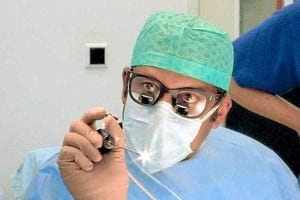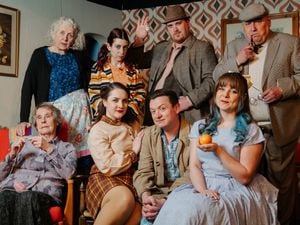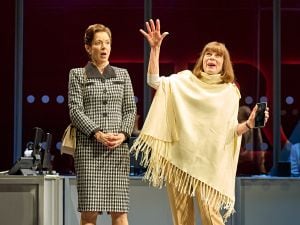TV review: Brain Doctors
It may seem like a case of all in a day's work in the neurosurgery department at the John Radcliffe Hospital in Oxford, as the skilled team handle emergency after emergency, from road accidents to tumours, writes Deborah Hardiman.

This three-part documentary was filmed over nine months and follows the remarkable work of the team where the stakes are high for both medical staff and the patients they treat with the aid of the latest hi-tech kit from stunt tubes to surgical cameras.
It needs an experienced head, nerves of steel and of course very steady hands.
Senior paediatric neurosurgeon Jayaratnam Jayamohan says: "We have to respect the organ and respect the fact that what we do to it can have huge implications for the patient."
The documentary maker Sasha Djurkovic makes a good effort with a fly-on-the-wall look of the highs and lows of the unit, drawing out thoughts of the senior doctors and capturing the mood of the participating patients without being too intrusive.
The result is quite fascinating, and we get the story of midwife Tracey, aged 50, who suffers bruising of the brain in a car crash. From the word go the doctors are worried because while her prognosis is poor, she is in a deep coma and despite their best efforts she does not respond sufficiently to the treatment.
Eventually they explain to her firefighter husband John that they can do no more and she is transferred to a hospital nearer home to be cared for.
Then there is father Martin who is struck down with a rare brain condition, but after six days of treatment with antibiotics he comes round and is able to tell his wife Lisa, that while sedated he was able to hear her speaking to him, urging him to get well.
If you cannot stand the sight of blood or internal organs this is not the series for you. There is a fair bit of invasive surgery and the viewers gets to see most of it.
We hear a lot from the doctors as they share their thoughts on their work and how it impacts on their family and colleagues.
Mr Jayamohan, a larger-than-life character, says: "We all make plans for what we are going to do – but for thousands of people up and down the country those plans do not work out because of some random event. We are here to more or less bring order to what is a completely disordered event."
He comes across as being quite funny, despite the obvious sad stories which go with the job, but his jovial manner makes him a hit with the young patients. He spent 16 years learning the craft of brain surgery before being appointed senior neurosurgeon.
This is put to the test when 14-year-old schoolboy Adam is referred to the unit suffering from amnesia.
The duty registrar phones Mr Jayamohan for a second opinion. Experience tells him the youth needs an emergency op in the front part of the brain which affects memories and the team gets to work to the sound of his favourite tracks. He admits that he prefers to operate with the music playing in the background.
"This is absolutely my favourite operation to do. I love them. It is the hallowed ground for neurosurgery. Thirty years ago it was highly dangerous for the patient as it's very intricate," Mr Jayamohan says.
Five hours later Adam is in recovery sitting up and talking with his memory returned.
Another young patient, dubbed the unit's 'frequent flyer', is seven-year-old dwarf Charlie who has been operated on 23 times by the team. This time she is suffering terrible headaches and Mr Jayamohan opens up her head to find that a stunt has become blocked and entwined with blood vessels causing a build up of fluids. After a tricky procedure the team repairs it and precocious Charlie is soon back on her feet.
As one might expect, this is somewhat similar to rival series Brain Hospital currently being aired on Channel 5, but it is truly is a case of life or death for the brain doctors as they battle at times against the odds to save shattered lives.
Do you agree with our reviewer? Have your say in the comment box below.





